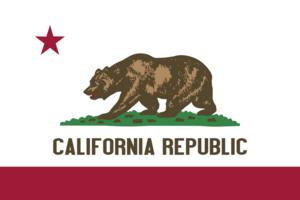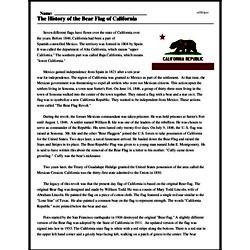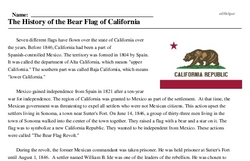The History of the Bear Flag of California
Seven different flags have flown over the state of California over the years. Before 1846, California had been a part of Spanish-controlled Mexico. The territory was formed in 1804 by Spain. It was called the department of Alta California, which means "upper California." The southern part was called Baja California, which means "lower California."
Mexico gained independence from Spain in 1821 after a ten-year war for independence. The region of California was granted to Mexico as part of the settlement. At that time, the Mexican government was threatening to expel all settlers who were not Mexican citizens. This action upset the settlers living in Sonoma, a town near Sutter's Fort. On June 14, 1846, a group of thirty-three men living in the town of Sonoma walked into the center of the town together. They raised a flag with a bear and a star on it. The flag was to symbolize a new California Republic. They wanted to be independent from Mexico. These actions were called "The Bear Flag Revolt."
During the revolt, the former Mexican commandant was taken prisoner. He was held prisoner at Sutter's Fort until August 1, 1846. A settler named William B. Ide was one of the leaders of the rebellion. He was chosen to serve as commander of the Republic. His term lasted only twenty-five days. On July 9, 1846, the U. S. flag was raised at Sonoma. Mr. Ide and the other "Bear Flaggers" joined the U.S. forces to take possession of California for the United States. Two days later, a naval lieutenant arrived. He hauled down the Bear Flag and raised the Stars and Stripes in its place. The Bear Republic Flag was given to a young man named John E. Montgomery. He is said to have written this about the removal of the Bear Flag in a letter to his mother: "Cuffy came down growling." Cuffy was the bear's nickname.




